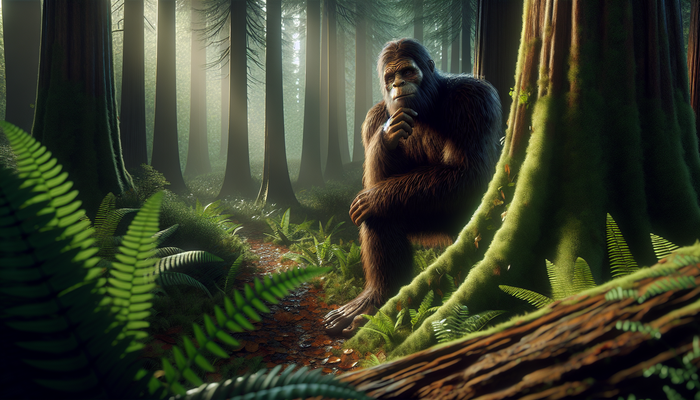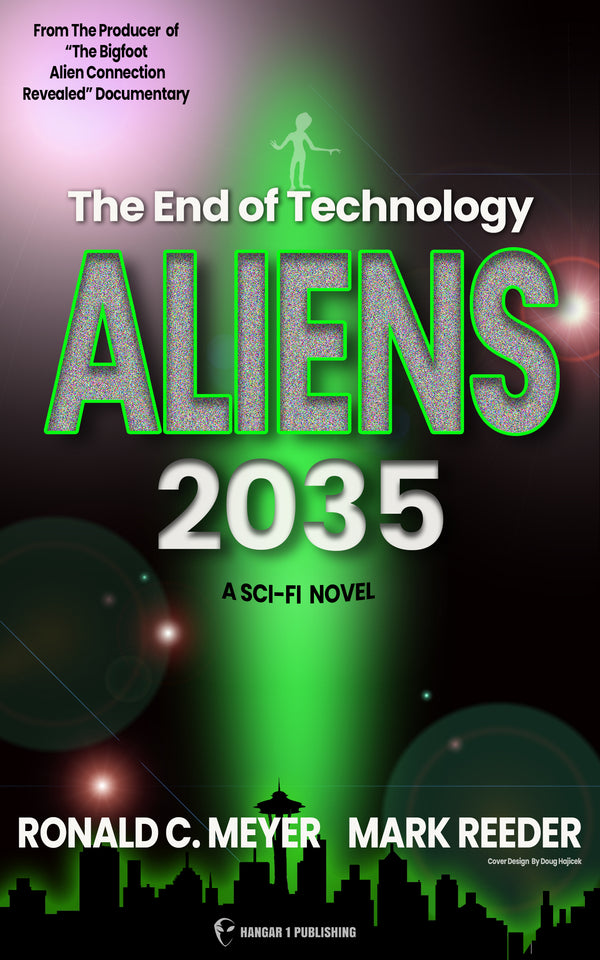Discover the Fascinating History and Legends of Vanmeter Iowa

By Oliver Bennett, Cryptozoologist
Historical Roots: The Founding of Van Meter
The story of Van Meter begins in 1869, when the town was first laid out amidst the fertile plains of central Iowa. Named after Jacob Rhodes Van Meter, a Dutch settler whose family had made the long journey from Meteren in the Netherlands, the town was officially incorporated on December 29, 1877. This date marks not just the birth of a new municipality, but the beginning of a community that would grow to embody the very essence of small-town American values.
The early days of Van Meter were characterized by the rugged determination of its settlers. These pioneers, many of Dutch descent like the Van Meters, saw in the rich soil and abundant water of the Raccoon River valley an opportunity to carve out a prosperous future. They built their homes, tilled the land, and established the foundations of what would become a thriving agricultural community.
Life in those early years was far from easy. The settlers faced harsh winters, unpredictable harvests, and the constant challenges of frontier life. Yet, it was precisely these hardships that forged the strong sense of community that still defines Van Meter today. Neighbors relied on each other for survival, sharing resources, labor, and the joys and sorrows of life on the edge of civilization.
As the town grew, so did its infrastructure. The arrival of the railroad in the late 19th century connected Van Meter to the wider world, bringing new opportunities for trade and growth. Farmers could now ship their produce to distant markets, while manufactured goods flowed into the town, improving the quality of life for its residents.
The Raccoon River, which had initially attracted settlers for its water and fertile floodplains, became a central feature of the town's identity. It provided not only sustenance through fishing and irrigation but also became a source of power for the mills that sprang up along its banks. These mills, processing grain and lumber, became the engines of Van Meter's early economy, employing locals and attracting new residents to the burgeoning town.
By the turn of the 20th century, Van Meter had established itself as a quintessential Midwestern farming community. Its Main Street boasted a collection of businesses catering to the needs of the local population – general stores, blacksmiths, and eventually, as technology progressed, automobile repair shops and gas stations. The town's social life centered around its churches, schools, and community gatherings, fostering a close-knit society that valued hard work, education, and neighborly support.
It was against this backdrop of rural prosperity and community cohesion that Van Meter would experience an event that would forever change its place in history and folklore. As the town settled into the rhythms of the new century, little did its residents know that they were about to become the center of a mystery that would perplex and fascinate people for generations to come.
The Van Meter Visitor: A Town's Brush with the Unexplained
In the crisp autumn air of 1903, Van Meter was thrust into the spotlight of the paranormal world. For five consecutive nights, from September 29 to October 3, the town's residents found themselves face to face with something they could neither explain nor ignore – a creature that would come to be known as the Van Meter Visitor.
The first encounter occurred on the night of September 29, when U.G. Griffith, a respected local businessman, was startled by a strange light moving atop the buildings along Main Street. Griffith, known for his level-headedness, was baffled by what he saw. The light seemed to dance from rooftop to rooftop with an agility that defied explanation. When he approached for a closer look, the light vanished, only to reappear on another building, as if taunting him.
The following night, the town's doctor, Alcott, had his own unsettling experience. Awakened by a blinding light shining through his bedroom window, he rushed outside, gun in hand, ready to confront what he assumed was an intruder. What he saw instead left him speechless. There, perched on a nearby building, was a creature unlike anything he had ever seen. Standing an estimated eight feet tall, it had bat-like wings that spanned an impossible width. But most striking was the horn protruding from its forehead, emitting the intense beam of light that had roused the doctor from his sleep.
Dr. Alcott, his medical training momentarily forgotten in the face of this otherworldly sight, fired his weapon at the creature. To his astonishment, the bullets seemed to have no effect. The being, apparently unfazed by the attack, took flight, disappearing into the night sky with a speed that left the doctor questioning his own senses.
As word of these sightings spread, more townspeople came forward with their own accounts. Peter Dunn, the local bank cashier, reported seeing the creature on the third night. His description matched those of Griffith and Dr. Alcott, adding the detail of a "great three-toed track" left behind by the visitor. Dunn, in a moment of quick thinking, made a plaster cast of the footprint – tangible evidence that something extraordinary had indeed visited Van Meter.
The town was in an uproar. Skeptics argued for rational explanations – perhaps it was an unusually large bird, or a clever hoax perpetrated by mischievous youths. But the consistency of the descriptions, coming from well-respected members of the community, was hard to dismiss. The creature was invariably described as having smooth, leathery skin, enormous wings, and that bizarre, light-emitting horn. Witnesses also reported a foul odor accompanying its presence, so potent that some claimed it left them feeling disoriented.
On the fourth night, O.V. White, known for his marksmanship, had his own encounter. Awakened by strange noises, he saw the creature perched atop a telephone pole. White, confident in his aim, fired several shots at the being. Like the bullets from Dr. Alcott's gun, White's shots seemed to have no impact. The creature, seemingly annoyed rather than harmed, emitted a sound described as a combination of a horse's neigh and a human shriek before flying off into the darkness.
By the fifth night, the town was in a state of near panic. A group of citizens, led by some of the previous witnesses, decided to take matters into their own hands. Armed with guns and determination, they followed reports of strange noises to an abandoned coal mine on the outskirts of town. There, in a moment that would cement the Van Meter Visitor in the annals of cryptozoology, they saw not one, but two creatures emerge from the mine shaft.
The larger of the two beings matched the descriptions from previous nights. The second, slightly smaller, suggested to some that they were dealing with a pair – perhaps even a parent and child. As the posse opened fire, the creatures, bathed in an eerie, golden light, seemed to absorb the barrage of bullets without harm. Then, in a final display of their otherworldly nature, they retreated into the mine shaft, disappearing from sight.
In the aftermath of this final encounter, the mine entrance was sealed, a desperate attempt by the townspeople to contain whatever had taken up residence there. Whether this action was effective or not is a matter of debate, as the Van Meter Visitor was never seen again – at least not in such a dramatic fashion.
The events of those five nights in 1903 left an indelible mark on Van Meter. For years afterward, residents spoke in hushed tones about the creature that had turned their quiet town upside down. Theories abounded – was it a prehistoric creature awakened from millennia of slumber? An alien visitor from a distant planet? Or perhaps something more metaphysical, a manifestation of the town's collective fears and anxieties at the dawn of a new century?
What makes the Van Meter Visitor story particularly compelling is the credibility of the witnesses. These were not attention-seekers or individuals prone to flights of fancy. They were pillars of the community – businessmen, professionals, and respected citizens whose words carried weight. Their consistent accounts, coupled with physical evidence like the plaster cast of the footprint, lend an air of authenticity to a tale that might otherwise be easily dismissed as folklore.
As news of the Van Meter Visitor spread beyond the town's borders, it captured the imagination of a wider audience. Newspapers as far away as New York City carried reports of the strange occurrences in this small Iowa town. The story became a sensation, drawing curiosity seekers and amateur investigators eager to catch a glimpse of the mysterious creature or uncover some explanation for the bizarre events.
In the years that followed, the legend of the Van Meter Visitor took on a life of its own. It became part of the town's identity, a piece of local lore passed down through generations. While some residents embraced the notoriety, others preferred to downplay the events, focusing instead on Van Meter's more conventional attributes – its strong community, its agricultural heritage, and its role in the broader tapestry of Iowa history.
Yet, the story refused to fade into obscurity. Periodically, new sightings would be reported – a strange light in the sky, an unusually large winged creature glimpsed at dusk. These modern encounters, while less dramatic than those of 1903, served to keep the legend alive, fueling ongoing debates about the nature of the Van Meter Visitor and its place in the pantheon of unexplained phenomena.
Today, the Van Meter Visitor stands as a fascinating chapter in the town's history, a blend of mystery, folklore, and shared experience that continues to intrigue residents and visitors alike. It serves as a reminder that even in the most ordinary of places, extraordinary things can happen, challenging our understanding of the world around us and the limits of what we consider possible.
The Cultural Impact: Embracing the Legend
The legend of the Van Meter Visitor has become more than just a curious footnote in the town's history; it has evolved into a cultural touchstone that shapes Van Meter's identity and draws visitors from far and wide. The impact of this century-old mystery on the community is evident in various aspects of local life, from annual celebrations to the way residents view their hometown's place in the wider world.
Perhaps the most visible manifestation of the Visitor's enduring legacy is the Van Meter Visitor Festival, held annually in late September to commemorate the 1903 sightings. What began as a small gathering of local history enthusiasts has grown into a significant event that attracts thousands of visitors to this small Iowa town.
The festival is a vibrant celebration that blends historical reenactments, paranormal discussions, and good old-fashioned community fun. Attendees can participate in guided tours of key locations associated with the 1903 sightings, led by local historians who recount the events with a mix of factual accuracy and dramatic flair. These tours often culminate at the site of the old coal mine, now long sealed, where participants can imagine the final confrontation between the townspeople and the mysterious creatures.
Paranormal experts and cryptozoology enthusiasts are regular fixtures at the festival, offering presentations that explore various theories about the nature of the Van Meter Visitor. These range from scientific explanations involving misidentified natural phenomena to more speculative ideas about interdimensional beings or time travelers. The diversity of perspectives encourages lively debates among attendees, fostering a spirit of open-minded inquiry that extends beyond the festival itself.
For the younger generation, the festival includes educational components that use the Visitor legend as a springboard for learning about local history, wildlife, and the importance of critical thinking. Children's activities might include craft sessions where kids can create their own versions of the creature based on historical descriptions, or scavenger hunts that incorporate facts about Van Meter's past and present.
Local businesses have also embraced the legend, offering Visitor-themed merchandise and menu items during the festival. The town's main street comes alive with vendors selling everything from t-shirts emblazoned with artistic renderings of the creature to locally-made "Visitor Vittles" – snacks and treats inspired by early 20th-century recipes with a monstrous twist.
Beyond the festival, the Van Meter Visitor has left its mark on the town in more subtle ways. The local library maintains a special collection of materials related to the 1903 events, including newspaper clippings, personal accounts, and books on cryptozoology and Iowa folklore. This resource serves both casual readers and serious researchers, ensuring that the story remains accessible to those interested in exploring it further.
The legend has also inspired local artists, who have created works ranging from paintings and sculptures to short stories and even musical compositions based on the Visitor. These creative interpretations not only keep the legend alive but also contribute to a unique local artistic tradition that sets Van Meter apart from other small towns.
In schools, the Van Meter Visitor often features in lessons about local history and critical thinking. Teachers use the story to encourage students to analyze historical evidence, consider different perspectives, and understand the role of folklore in shaping community identity. This educational approach helps to foster a sense of connection to the town's past while developing important analytical skills.
The impact of the legend extends to the town's economy as well. Throughout the year, Van Meter sees a steady stream of tourists drawn by the allure of the Visitor story. These visitors patronize local businesses, stay in nearby accommodations, and contribute to the overall economic vitality of the area. The town has wisely balanced its embrace of the legend with efforts to showcase its other attractions, ensuring that visitors come for the mystery but stay for the charm of small-town Iowa life.
Interestingly, the Van Meter Visitor has also put the town on the map in academic circles. Folklorists, historians, and sociologists have studied the phenomenon as a case study in how legends evolve and impact small communities. Their research has led to publications and presentations that bring attention to Van Meter in scholarly contexts, further enriching the town's cultural significance.
For many residents, the legend of the Van Meter Visitor represents a point of pride – a unique piece of local lore that distinguishes their town from countless others across the Midwest. It's a conversation starter, a source of gentle humor, and a reminder of the town's capacity for wonder. Even those who approach the story with skepticism appreciate its role in bringing the community together and attracting positive attention to Van Meter.
The enduring fascination with the Van Meter Visitor speaks to a broader human desire for mystery and the unknown. In an age where much of the world feels thoroughly explored and explained, the idea that something truly inexplicable could occur in a small Iowa town captivates the imagination. It suggests that there are still mysteries to be solved, wonders to be discovered, even in the most seemingly ordinary places.
As Van Meter continues to grow and evolve, the legend of the Visitor serves as a bridge between its past and future. It's a reminder of the town's rich history and the generations of residents who have called it home. At the same time, it's a catalyst for ongoing curiosity and exploration, inspiring new generations to look at their surroundings with fresh eyes and an open mind.
In embracing its brush with the unexplained, Van Meter has transformed a potentially unsettling event into a source of community pride and cultural richness. The Van Meter Visitor, whatever its true nature, has become an integral part of the town's story – a testament to the power of legend to shape identity, foster community, and keep the spirit of wonder alive in an ever-changing world.
Beyond the Legend: Van Meter's Rich Tapestry of Attractions
While the Van Meter Visitor may be the town's most famous claim to fame, it's far from the only reason to take notice of this charming Iowa community. Van Meter boasts a diverse array of attractions that showcase its rich history, natural beauty, and vibrant community spirit.
At the heart of Van Meter's historical attractions stands the Bob Feller Museum, a tribute to one of baseball's greatest pitchers and the town's most famous son. Robert William Andrew Feller, born on a farm just outside Van Meter in 1918, went on to become a Hall of Fame pitcher for the Cleveland Indians. The museum, opened in 1995, houses an impressive collection of Feller memorabilia, including his uniforms, trophies, and personal items that tell the story of his remarkable career.
Visitors to the museum can explore exhibits that trace Feller's journey from a farm boy with a blazing fastball to a major league star nicknamed "The Heater from Van Meter." Interactive displays allow fans to compare their pitching speed to Feller's legendary fastball, while video installations bring to life some of his most memorable moments on the mound. The museum not only celebrates Feller's athletic achievements but also his service to the country during World War II, highlighting the values of patriotism and dedication that he embodied.
For those seeking outdoor adventures, the Raccoon River Valley Trail offers a picturesque escape into nature. This 89-mile trail, part of which passes through Van Meter, is a testament to the region's commitment to preserving its natural heritage while providing recreational opportunities for residents and visitors alike. The trail follows the path of an abandoned railroad line, offering a smooth, paved surface ideal for cycling, jogging, or leisurely walks.
As trail users make their way through Van Meter, they're treated to stunning views of the Raccoon River and the surrounding countryside. The changing seasons bring new beauty to the trail, from the vibrant greens of spring and summer to the rich golds and reds of autumn. Wildlife enthusiasts might spot deer, various bird species, and even the occasional fox or wild turkey along the quieter stretches of the trail.
The Van Meter segment of the trail serves as a gateway to the larger network, connecting the town to neighboring communities and fostering a sense of regional unity. Local businesses, particularly those near the trailhead, have benefited from the influx of cyclists and hikers, offering refreshments, bike rentals, and repair services.
For those interested in more structured outdoor activities, the Van Meter Recreational Complex stands as a hub of community life. This modern facility includes baseball and softball fields, soccer pitches, and a playground, providing spaces for organized sports and casual play alike. The complex hosts numerous youth sports leagues and tournaments throughout the year, drawing families from across the region and fostering a strong sense of community through shared athletic endeavors.
Adjacent to the Recreational Complex, Trindle Park offers a more tranquil outdoor experience. This wooded area features walking trails that wind through native Iowa flora, providing a peaceful retreat for nature lovers and a valuable educational resource for local schools. The park's design incorporates elements of prairie restoration, showcasing the types of plants and ecosystems that would have been familiar to Van Meter's earliest settlers.
Van Meter's commitment to preserving its natural and historical heritage is further evidenced by the town's approach to development. The city council has worked to maintain a balance between growth and conservation, implementing zoning regulations that protect green spaces and encourage sustainable building practices. This forward-thinking approach ensures that as Van Meter grows, it retains the charm and natural beauty that make it special.
The town's Main Street, while modest in size, offers a glimpse into small-town America at its finest. Local businesses, many of which have been family-owned for generations, line the street, offering everything from homestyle cooking to unique crafts and antiques. The annual Van Meter Visitor Festival transforms Main Street into a bustling hub of activity, but even on ordinary days, it serves as the heart of the community, a place where neighbors meet and visitors can experience genuine Iowa hospitality.
For those interested in architecture and local history, Van Meter offers several notable buildings that have stood the test of time. The Van Meter United Methodist Church, with its classic white steeple, has been a spiritual center for the community since the late 19th century. The building's well-preserved exterior and interior provide a window into the town's religious heritage and the architectural styles of its early years.
The old Van Meter School building, while no longer used for educational purposes, stands as a testament to the town's longstanding commitment to education. Its sturdy brick construction and large windows reflect the school architecture of the early 20th century, a period when natural light and ventilation were key considerations in building design.
As day turns to night, Van Meter reveals another facet of its charm. The town's relative distance from major urban centers means that on clear nights, the sky comes alive with stars. Amateur astronomers and stargazers often gather in the open areas around town, taking advantage of the minimal light pollution to observe celestial wonders. This connection to the night sky adds another layer to Van Meter's appeal, linking the modern town to the vast, star-filled skies that would have awed its earliest inhabitants.
Throughout the year, Van Meter hosts a variety of events that bring the community together and attract visitors from surrounding areas. The Fourth of July celebration, complete with a parade down Main Street and fireworks over the Raccoon River, is a highlight of the summer calendar. In the fall, the Harvest Festival celebrates the agricultural heritage of the region with farm-to-table dinners, craft fairs, and tractor pulls that harken back to the town's rural roots.
These events, along with the town's permanent attractions, weave together to create a rich tapestry of experiences that define Van Meter. From the historical echoes of the Bob Feller Museum to the natural beauty of the Raccoon River Valley Trail, from the community spirit evident in its parks and recreational facilities to the simple pleasures of a stroll down Main Street, Van Meter offers a diverse array of attractions that appeal to a wide range of interests.
What sets Van Meter apart is not just the individual merits of these attractions, but the way they come together to create a cohesive community identity. Here, history and progress, nature and development, local pride and welcoming hospitality all coexist in harmonious balance. It's a place where the legendary and the everyday intersect, where a mysterious visitor from over a century ago shares space with the very real and vibrant life of a modern small town.
In Van Meter, every attraction, whether natural or man-made, tells a part of the town's story. Together, they invite visitors to do more than just pass through – they encourage people to pause, explore, and perhaps discover something unexpected. In doing so, they ensure that Van Meter remains not just a dot on the map, but a destination worth discovering, a small town with a big heart and an even bigger story to tell.
Education and Community: The Heartbeat of Van Meter
At the core of Van Meter's identity lies a profound commitment to education and community engagement, elements that have shaped the town's character as much as its historical events and natural surroundings. The Van Meter Community School District stands as a testament to this commitment, serving as both an educational institution and a focal point for community life.
The school district, which encompasses a single K-12 campus, has earned a reputation for academic excellence that extends far beyond the town's borders. With a student population of just over 800, the district offers a personalized educational experience that larger schools often struggle to match. This intimate learning environment allows for close relationships between students, teachers, and staff, fostering a sense of belonging and individual attention that contributes to student success.
Van Meter's approach to education is notably progressive, embracing technology and innovative teaching methods while maintaining a strong foundation in traditional academic disciplines. The district was an early adopter of one-to-one computing initiatives, ensuring that every student has access to a personal device for learning. This technology integration extends beyond mere device usage; it's woven into the curriculum in ways that prepare students for the digital world they'll inhabit as adults.
The school's STEM (Science, Technology, Engineering, and Mathematics) program is particularly robust, offering hands-on learning experiences that challenge students to apply theoretical knowledge to real-world problems. From robotics clubs to environmental science projects focused on the nearby Raccoon River, Van Meter students are encouraged to think critically and creatively about the world around them.
But Van Meter's educational philosophy isn't solely focused on academic achievement. The district places a strong emphasis on character development and community service. Students at all grade levels are involved in service-learning projects that benefit the local community, from organizing food drives for local pantries to participating in environmental clean-up efforts along the Raccoon River Valley Trail. These initiatives not only contribute to the town's well-being but also instill in students a sense of civic responsibility and community pride.
The school's athletic programs play a significant role in community life as well. Friday night football games at the high school stadium are more than just sporting events; they're social gatherings that bring together residents of all ages. The success of Van Meter's sports teams, particularly in baseball – a nod to the town's connection to Bob Feller – has been a source of local pride and has helped to put the small town on the map in state-wide competitions.
The arts haven't been neglected in Van Meter's educational landscape. The school's music and drama programs are vibrant, with performances that draw audiences from across the region. The annual spring musical, in particular, has become a community event, with local businesses sponsoring productions and residents volunteering their time and skills to create sets, costumes, and manage backstage operations.
What truly sets Van Meter's educational system apart, however, is the level of community involvement. The line between school and community is often blurred, with local businesses, organizations, and individuals playing active roles in supporting and enhancing educational opportunities. Mentorship programs connect students with local professionals, providing real-world insights into various career paths. Guest speakers from the community regularly visit classrooms, sharing their expertise and experiences with students.
This symbiotic relationship between school and community extends to the use of school facilities. The school campus serves as a hub for various community activities, from adult education classes in the evenings to summer sports camps for youth. The school library, with its extensive collection and modern technology, is open to the public, serving as a valuable resource for the entire community.
The Van Meter Education Foundation, a non-profit organization run by community volunteers, plays a crucial role in supporting the school district. Through fundraising efforts and community partnerships, the foundation provides grants for innovative teaching projects, scholarships for graduating seniors, and resources for extracurricular activities that might otherwise be beyond the school's budget.
This strong educational foundation has had a profound impact on the town's demographics and community life. Many families have chosen to move to Van Meter specifically for its schools, contributing to a gradual but steady population growth over the past few decades. This influx has brought new energy and ideas to the community while still maintaining the small-town atmosphere that residents cherish.
The emphasis on education has also influenced the town's economic landscape. Van Meter has seen an increase in home-based businesses and remote workers, drawn by the combination of excellent schools and small-town quality of life. This trend has helped to diversify the local economy, bringing new skills and perspectives to the community.
Community events often revolve around the school calendar, with the start and end of the school year marked by town-wide celebrations. The annual homecoming parade, which winds through downtown before culminating at the high school, is a particularly vibrant display of community spirit, with local businesses decorating storefronts and residents lining the streets to cheer on students and alumni.
The school's commitment to lifelong learning is evident in its adult education programs, which offer everything from technology workshops for seniors to language classes for adults. These programs not only provide valuable skills but also serve as social outlets, strengthening community bonds across generations.
Van Meter's approach to education and community engagement serves as a model for how small towns can thrive in the 21st century. By investing in education, fostering strong community ties, and embracing innovation while respecting tradition, Van Meter has created an environment where learning is valued, community is celebrated, and the future is approached with optimism and purpose.
In many ways, the story of Van Meter's educational system mirrors the larger narrative of the town itself – a place where the past is honored, the present is engaged with enthusiasm, and the future is shaped with care and foresight. It's a testament to the power of education to not just prepare individuals for success, but to build and sustain vibrant, forward-thinking communities.
As Van Meter continues to evolve, its commitment to education and community remains unwavering. It's this dedication that ensures that the town will continue to be not just a place on the map, but a nurturing environment where ideas flourish, connections deepen, and each generation is empowered to write the next chapter in Van Meter's ongoing story.
Nature's Embrace: The Environmental Tapestry of Van Meter
The natural environment surrounding Van Meter plays a crucial role in shaping the town's character, lifestyle, and even its economy. Situated along the picturesque Raccoon River, Van Meter is blessed with a diverse landscape that offers both aesthetic beauty and practical resources to its residents and visitors alike.
The Raccoon River, which meanders through the heart of Van Meter, is more than just a geographical feature; it's the lifeblood of the region. Its waters have nourished the fertile soil of the river valley for millennia, creating some of the most productive farmland in Iowa. The river's floodplain, with its rich alluvial deposits, has been the foundation of the area's agricultural success since the first settlers arrived in the mid-19th century.
Today, the Raccoon River continues to play a vital role in the community. Its waters support a thriving ecosystem that includes a variety of fish species, making it a popular destination for anglers. Smallmouth bass, channel catfish, and walleye are among the prized catches that draw fishing enthusiasts from across the state. The river's banks, lined with cottonwoods, silver maples, and willows, provide habitat for numerous bird species, including great blue herons, belted kingfishers, and bald eagles.
The river also offers recreational opportunities beyond fishing. Kayaking and canoeing have become increasingly popular activities, with locals and visitors alike enjoying the peaceful flow of the water and the chance to observe wildlife from a unique perspective. The town has responded to this interest by developing access points and rest areas along the river, making it easier for people to enjoy this natural resource responsibly.
Beyond the river, Van Meter is surrounded by a patchwork of agricultural fields, woodlands, and restored prairies that showcase the diverse beauty of Iowa's landscape. The rolling hills that characterize this part of the state offer stunning vistas, particularly in the fall when the changing leaves create a tapestry of reds, golds, and oranges across the countryside.
The town's commitment to preserving its natural heritage is evident in its parks and green spaces. Trindle Park, with its wooded trails and native plant gardens, serves as an outdoor classroom where residents can learn about local ecosystems and the importance of conservation. The park's design incorporates elements of prairie restoration, showcasing the types of plants and grasses that would have dominated the landscape before European settlement.
Van Meter's location also puts it in prime position to observe one of nature's most spectacular phenomena: the monarch butterfly migration. Each fall, thousands of these delicate insects pass through the area on their journey to Mexico, feeding on the nectar of late-blooming wildflowers. Recognizing the importance of this event, the town has worked to create monarch-friendly habitats, planting milkweed and other native species that support these butterflies and other pollinators.
The town's agricultural roots remain strong, with many residents still engaged in farming or related industries. However, there's been a shift towards more sustainable and diverse agricultural practices. Small-scale organic farms have sprung up in the area, supplying local restaurants and farmers' markets with fresh, locally-grown produce. These farms not only contribute to the local economy but also help to maintain the area's rural character and provide habitats for wildlife.
Climate plays a significant role in shaping life in Van Meter. The town experiences the full range of Midwestern seasons, each bringing its own challenges and charms. Winters can be harsh, with heavy snowfalls and biting winds sweeping across the open landscape. Yet these cold months also bring opportunities for winter sports, with cross-country skiing and snowshoeing popular activities on the Raccoon River Valley Trail.
Spring arrives with an explosion of color as wildflowers bloom and trees bud. This season is marked by frequent thunderstorms, which can be both awe-inspiring and potentially dangerous. The town has developed robust emergency preparedness plans to deal with severe weather, including tornado drills and community shelters.
Summers in Van Meter are typically warm and humid, perfect for outdoor activities and community gatherings. The long daylight hours of midsummer allow for evening strolls along the river or late-night stargazing sessions in the town's open spaces. The relative lack of light pollution in the area makes Van Meter an excellent spot for amateur astronomers to observe the night sky.
Fall is perhaps the most beloved season in Van Meter. As temperatures cool and humidity drops, the landscape transforms into a riot of color. This is the time for harvest festivals, hayrides, and leisurely drives through the countryside to admire the foliage. It's also a crucial period for local farmers, as they work to bring in their crops before the first frost.
The changing seasons and varied landscape provide a rich backdrop for the town's wildlife. Deer are a common sight, often seen grazing in fields at dawn and dusk. Wild turkeys strut through wooded areas, while raccoons and opossums make their presence known in more urban settings. Birdwatchers flock to the area to observe both year-round residents and migratory species that pass through during spring and fall.
Van Meter's natural environment also presents challenges, particularly in terms of conservation and resource management. The town has had to grapple with issues such as soil erosion, water quality concerns related to agricultural runoff, and the preservation of native habitats in the face of development pressures. These challenges have spurred community-led initiatives aimed at sustainable land use and environmental stewardship.
One such initiative is the Van Meter Community Garden, a project that not only provides fresh produce for residents but also serves as a model for sustainable urban agriculture. The garden uses rainwater harvesting techniques and organic growing methods, demonstrating how even small communities can contribute to larger environmental goals.
From Bigfoot to UFOs: Hangar 1 Publishing Has You Covered!
Explore Untold Stories: Venture into the world of UFOs, cryptids, Bigfoot, and beyond. Every story is a journey into the extraordinary.
Immersive Book Technology: Experience real videos, sights, and sounds within our books. Its not just reading; its an adventure.



























